Part 8: 520-540 YE-The Years of Isolation
The Years of Isolation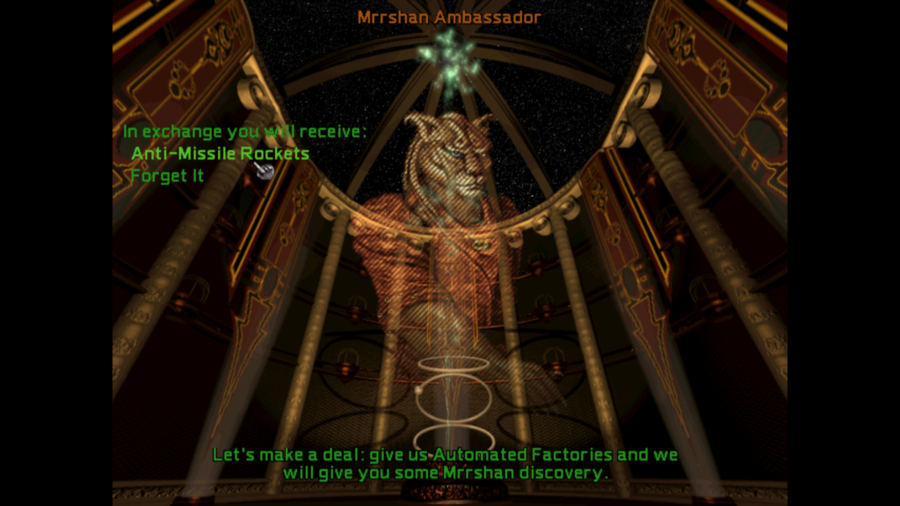
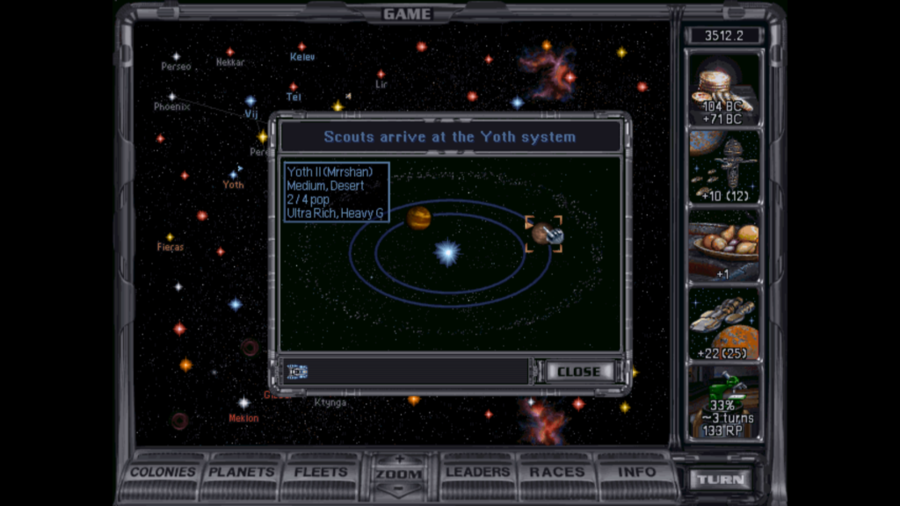
The early years of the 420s saw increasing contact with both the Interstellar Union and the Autarchy. Technology transfers between Narestan civilisation and the Mrrshan gave Narestan shipbuilders access to small high-manuever missiles optimised for interception of large shipkiller missiles, while continued contact allowed full charts of the Interstellar Union's system of Yoth. The prosperity of previous decades, however, was abruptly challenged in 524.

The final collapse of a distant star into a black hole sent gravitational shockwaves propagating through hyperspace, massively increasing the energy required to send ships into hyperspace and stranding almost all traffic where it was. Communications and trade limped on, barely, cut down to only the most critical of shipments at staggering expense. To the extent that local agriculture could pick up the slack, it did so, but the flux in hyperspace threatened to cause the eventual collapse of interstellar civilisation as a united force should it continue for too long.
Honestly, hyperspace fluxes don't do a lot of things they probably should. Cutting off interstellar traffic should probably cut trade, food shipments, and communications to the extent that the ability to play the game is badly compromised, with famine in systems without local food production, no ability to use income in distant systems to cover the needs of other systems, no trade and communications between different empires, et cetera, when honestly all they actually do is halt military ships, exploration, and the ability to send new colony missions out of system. I will attempt to handwave this and present the impact as worse than it actually was.


Despite this disaster, the following year saw the development of new analytic economic methods used to ruthlessly streamline business methods in Narestan civilisation, rendering an economy already highly efficient taking advantage of every possible advance in intraplanetary trade, with essentially no waste. Local planetary economies adapted to the impact of the collapse of interstellar trade, overcoming many of the difficulties presented. Five years later, in 530, security firms working in concert with optronics programming firms developed algorithms for realtime brain scans that could accurately distinguish between truth and falsehood in interrogations. This allowed for significantly more reliable investigations and accurate identification of guilty parties in cases, and the ability to dismiss many persons as persons of interest following brief interviews early in an investigation.
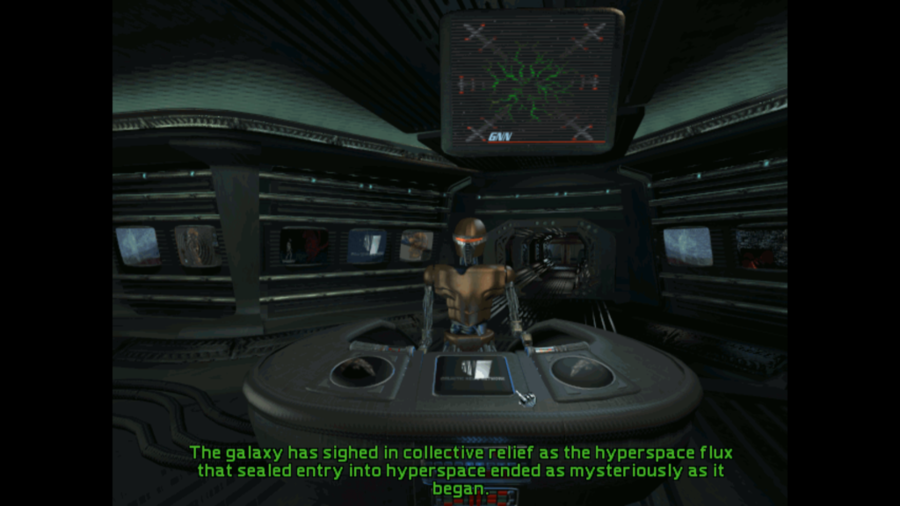
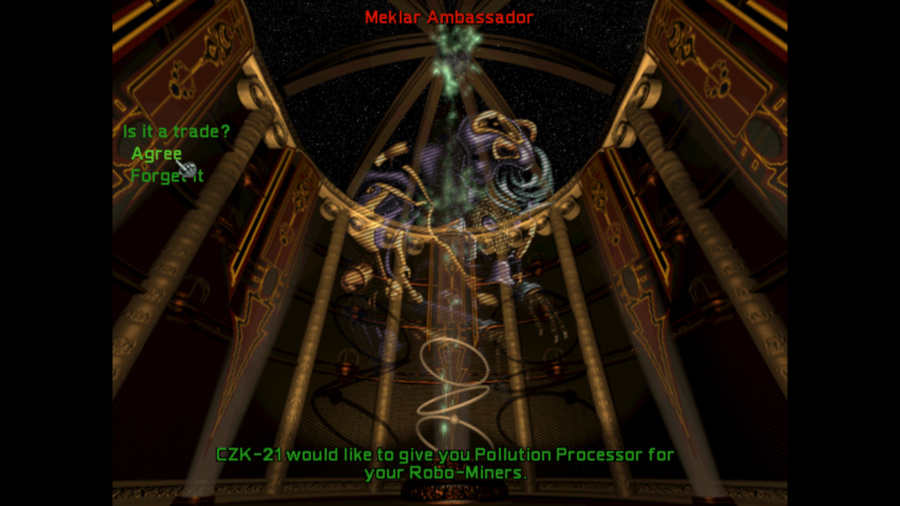
In 537 YE, the disruption to hyperspace finally died down after 13 years of travel disruptions, with large-scale trade and communications resuming rapidly thereafter and the economy of the known galaxy pulling swiftly out of its slump. With communications restored to the Autarchy, technology transfers between the Narestans and Meklars could go forward, with Narestan innovations in industrial robotics and drone design exchanged for Meklar advances in chemical processing of hazardous waste from industrial processes. Many industrial byproducts were able to be treated and broken down into harmless substances, substantially reducing the expense of disposal of hazardous waste once the treatment processes were implemented.
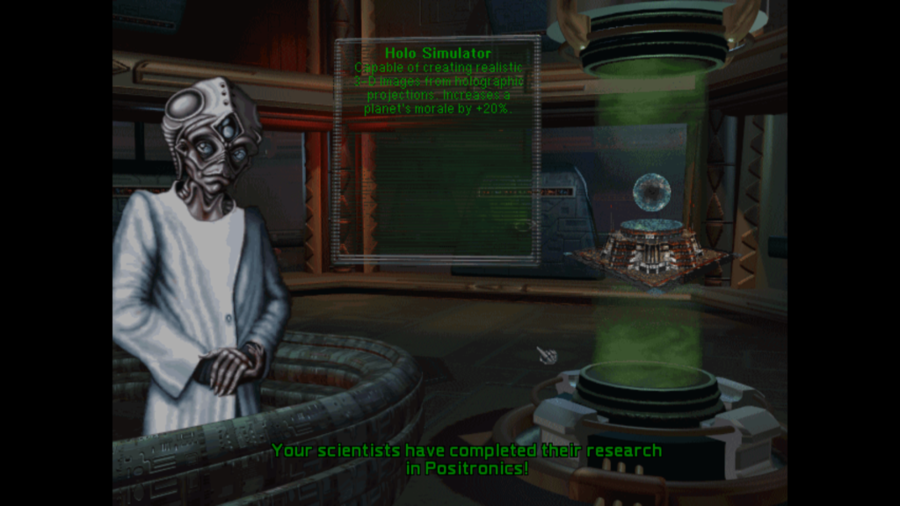
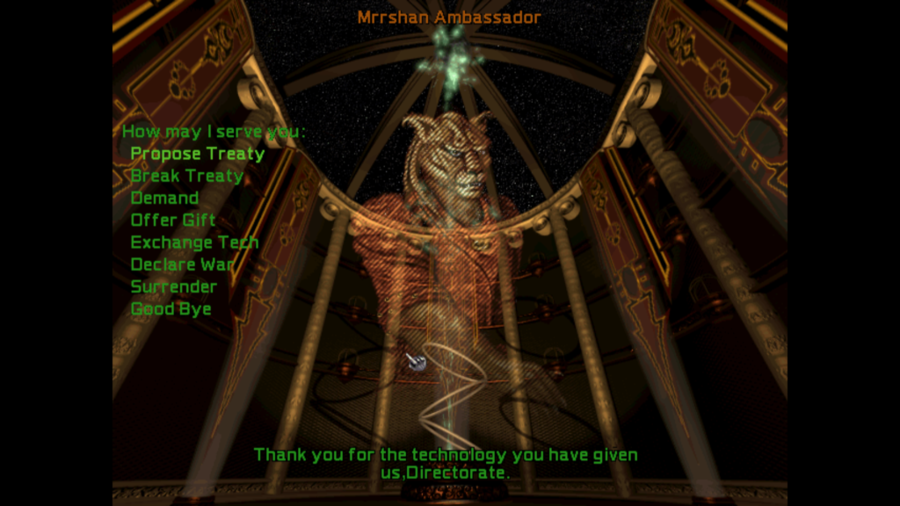

Only two years later, further breakthroughs allowed for the development of 'positronic' computers, making use of tiny quantities of antimatter to speed the generation of photons for information transmission in a standard optronic computer. The increased power and capabilities of optronics using positronic switching led to a remarkable renaissance in computer-mediated art, entertainment, and gaming in Narestan culture, with widespread consumer use of very powerful processors allowing for on the fly calculations that would previously choked any consumer hardware, and with immense quantities of computer power able to be thrown by design studios at the generation of new works. Vivid and convincing holography with lifelike behavior, simulations of vast domain spaces in realtime in gaming, improved artificial intelligence, rapid lookup of local data, and more revolutionised the entertainment industry, even as business productivity tools were likewise upgraded with the new processors. Narestan consumers worked hard to support increasing consumption of entertainment products, aided by improved productivity tools, and labor productivity over every segment of the Narestan economy saw improvement.
Meanwhile, a small charitable foundation established on Nares, the Meded Foundation, quietly compiled information on modern Narestan hydroponic technology and offered plans and advisors free of charge to both Mrrshan and Meklar agronomy ventures, hoping to see alien cultures beyond the borders of Narestan civilisation benefit by more reliable and secure access to food. Although this project was viewed as somewhat impractical by many Narestans, it nonetheless proved a valuable gesture of goodwill, helping to cement the friendship between the Narestan species and its neighbors.
Narestan Civilisation as of 540

Recent technological breakthroughs, rapidly implemented on Nares, have resulted in the planet's economy, already strong, experiencing a massive surge. Quality of life is higher than any before, while chemical processing of industrial waste leaves only a much-reduced quantity for disposal. New colonists are gathering here for yet another mission to a new star system.
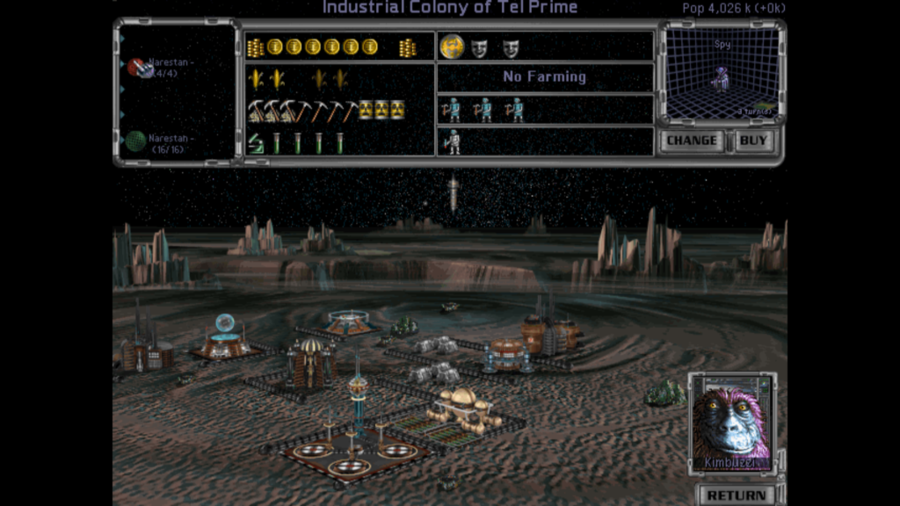
Even despite the continual expense of equipment repair on a world bombarded with radiation, Sedal's economic growth over the past decades has led the world to a major economic boom. The planet remains a center for security contracting dedicated to protecting trade secrets of firms across Narestan space.

Sadesal now has its own armed orbital shipyard, along with a local economy fully caught up to modern standards, helping the world thrive. The world's population now exceeds four billion, and is still growing. As with Sedal, Sadesal is a center of training for security contractors helping to protect the property of firms in Narestan space.

Tanan's population now exceeds two billion, with an economy powerful and sophisticated enough to maintain local infrastructure and contribute meaningfully to interplanetary trade, although it no longer can rely on agricultural exports. Its own armed shipyard is in construction, hopefully to secure the world against any unexpected threats.

Talesen's population, now over three billion, supports a modern economy with significant surpluses, even if one dependent on agricultural imports. It too is constructing its own armed shipyard for security in an uncertain galaxy.
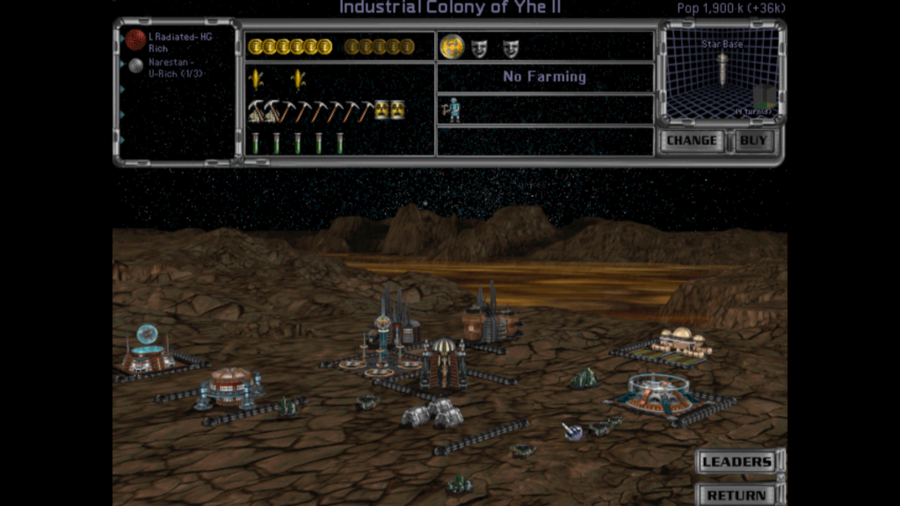
Renar, although it has enjoyed development to a fully-modern economy, still suffers from the limited resources of its relatively small population base, not yet two billion. It remains dependent on specialty equipment imports to maintain its infrastructure, although development of a more sophisticated local system of trade as the population grows may likely change this in the near future. As with many other worlds, it is assembling its own shipyard complex to protect the planetary orbit.
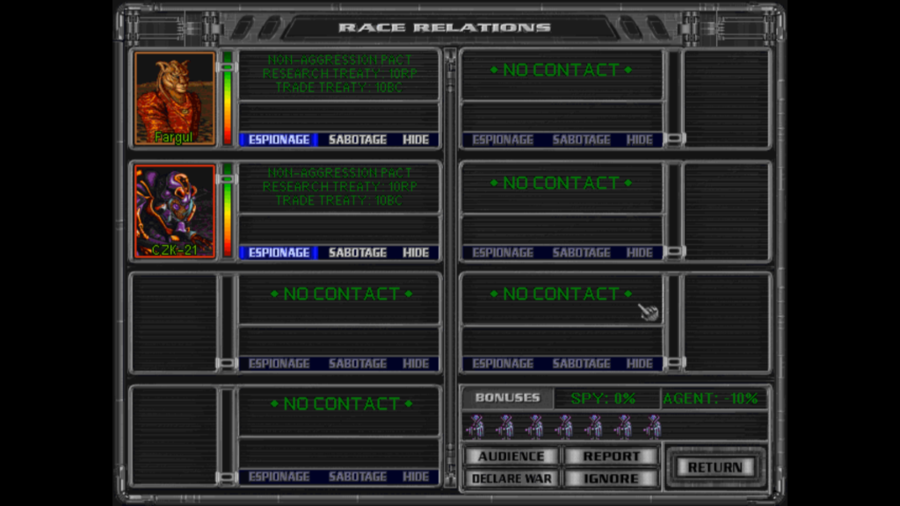
Trade volumes with the Meklar have steadily grown, helping increase innovation in Narestan culture and covering the expenses of an expanded security sector responding to alien contact. The Interstellar Union and the Autarchy both regard Narestan civilisation warmly as a valuable trade partner and a reliable friend.

The Narestan economy has grown immensely over the past two decades, surging to its strongest position yet since interstellar trade has been restored. Innovation has seen healthy expansion, which accumulation of investment capital has accelerated dramatically. Qualities of life are high across Narestan civilisation, while a colonisation mission is almost ready to establish a new settlement in the Perseo system.
Investment Proposals
Research Priorities
There are promising developments in several fields available for future research. Breakthroughs in medical technology are likely to lead to longer, healthier lives for Narestans and windfall revenues for the developers, while research into communications methods more economical than the use of communications probes is quietly under way. Development of advanced kinetic weapons for ships and drones in the void or specialised protective measures exploiting certain bizarre quirks of electromagnetic behavior could also be possible.
Please vote between Microbiotics, Tachyon Communications, Mass Drivers, or Class I Shields. Mass drivers and class I shields are mutually-exclusive. Shields are valuable, but mass drivers are the best fighter weapons available for a long time.
Security Budgets
Budgets for informational security and investigation are expected to expand to somewhere between 15 to 20 trillion credits annually, based on risk assessments.
Please vote between 15 or 20 defensive spies as a target to be reached.
Continued Colonisation
It seems likely that Tur II will be the next target for colonisation as the Narestan species spreads amongst the stars.
If you have another preference, say so, based on known planets listed last update.
Despite the struggles presented by instability in hyperspace, Narestan civilisation continues to grow strong. It seems likely peace and prosperity will continue over the following decades.